Rellenong bangus is one of the most popular dish in the Philippines. On top of the delicious taste and unique process of preparation compared to other fish recipes, the amount of work involve is tedious. Separating the skin from the meat and deboning and flaking of the milkfish meat requires a lot of patience. But after all the hard work of deboning, marinating the skin, cooking the meat with all the ingredients, stuffing the skin with the fish meat mixture and frying is the reward of eating a unique and delicious Filipino dish.
Rellenong Bangus: A Filipino Classic That’s Worth the Effort
Growing up in the heart of Cavite, this was a dish that always made family gatherings feel extra special. My uncle Mang Ben, who had a knack for cooking, always said that making this stuffed milkfish was a labor of love. Watching him prepare it was both inspiring and daunting. As he meticulously worked to separate the delicate fish skin from its meat, he’d remind us, “Patience is key.” Those words stuck with me, and whenever I make rellenong bangus, I hear his voice in my head, urging me to take my time.
This Filipino classic has a unique process that makes it stand out. It’s not just a meal; it’s an experience. And while it does require effort, the reward of biting into that perfectly fried, golden-brown milkfish, filled with a savory mixture of fish and other delicious ingredients, is absolutely worth it.
What Makes Rellenong Bangus Special
Rellenong bangus isn’t your average fish dish. It combines the light, delicate flavor of milkfish with the richness of ground pork, sweetness from raisins, and a medley of vegetables. It’s a beautiful blend of textures and tastes that tell a story of Filipino ingenuity and love for good food.
The process of preparing this dish is what sets it apart. Carefully separating the skin without tearing it is an art form in itself. Back in the day, my Tita Lorna used to boast about her method, which involved an old aluminum sandok with a straight handle. “It’s all about using the right tool,” she’d say. She wasn’t wrong. Using a palette knife or even a frosting spatula can also do the trick, but that trusty sandok brings a touch of nostalgia.
The History Behind Rellenong Bangus
Milkfish, or bangus, is the national fish of the Philippines, and its versatility in Filipino cuisine is unparalleled. Stuffed bangus, however, elevates it from a humble everyday dish to something truly celebratory. Some say the dish was inspired by Spanish influences during colonial times, adapting the idea of stuffed meats to suit local tastes and ingredients.
This dish became a mainstay in many households because it’s perfect for feeding large families or celebrating special occasions. Its preparation—carefully deboning, flaking, seasoning, and restuffing—is a reflection of the care Filipinos put into their cooking, especially when it comes to meals meant to bring people together.
The Art of Preparing Rellenong Bangus
Preparing rellenong bangus is a skill that improves with practice, as I learned through trial and error. My cousin Neri gave me a tip when I was struggling to remove the fish meat without tearing the skin: gently pound the fish first to loosen the meat from the skin. This step is crucial. Using the flat side of a knife, give the fish a light but firm tap all over.
The method Mang Ben swore by involved breaking the big bone at the nape and tail, then inserting the handle of the sandok through the neck. This tool becomes an extension of your hand, helping you scrape down the meat from the inside. It might feel intimidating at first, but with steady hands and a little patience, the meat will come out smoothly.
Marinating the fish skin in calamansi juice and soy sauce isn’t just for flavor—it also helps keep the skin firm during frying, ensuring it stays intact. This step is one of the many little secrets that make this stuffed milkfish such a showstopper.
Why These Techniques Work
Deboning and flaking the fish meat are key to achieving a uniform and flavorful stuffing. Boiling the fish meat before picking out the bones ensures that the fish is tender enough to flake but not overly soft. Combining this flaked fish with ground pork, vegetables, raisins, and seasonings creates a filling that’s both savory and slightly sweet, capturing the complex flavor profile typical of Filipino dishes.
Adding raw egg and flour to the mixture binds the ingredients together, ensuring that the stuffing holds its shape inside the fish skin. Frying the stuffed bangus until golden brown creates a crisp exterior that contrasts beautifully with the soft, flavorful filling.
A Dish That Brings People Together
For me, rellenong bangus is more than just a dish. It’s a reminder of Sunday lunches with my family, the sound of my mom sewing up the stuffed fish with needle and thread, and the smell of it frying in the kitchen. It’s the laughter around the table as we competed to get the last slice.
Making this dish might seem intimidating for beginners, but don’t let that stop you. Take your time, enjoy the process, and remember that every step—from scraping the fish to frying it to perfection—is part of the experience.
Food for Thought
Did you know that milkfish is incredibly healthy? It’s packed with Omega-3 fatty acids, which are great for the heart. Combining it with vegetables and other ingredients in this stuffed bangus makes this dish not only flavorful but also nutritious.
So, the next time you’re looking for a dish to impress your family or guests, give rellenong bangus a try. It’s a labor of love that’s guaranteed to leave everyone at the table smiling.
How To Cook Rellenong Bangus
Ingredients
- 2 pcs medium sized bangus milkfish
- 1 pc onion chopped finely
- 6 cloves garlic minced
- 1 pc large sized carrot small cubes
- 1 cup raisins
- 2 pcs raw egg large
- 1/8 cup oyster sauce
- 1/2 tsp. salt
- 1 tsp. Worcestershire sauce
- 2 pcs red bell pepper chopped finely
- 1/8 cup Flour
- 1 cup frozen green peas
- 4 pcs kalamansi juice extracted
- 1/4 cup soy sauce
- 1/4 kilo ground pork
- 1 cup water for boiling the meat
- cooking oil for frying
- salt and pepper to taste
Instructions
How To Cook Rellenong Bangus
- Scrape fish scales. Clean. Gently pound fish to loosen meat from the skin. Use flat side of a knife in pounding.
- Break the big bone at the nape and on the tail. Insert the end of the handle of an aluminum kitchen turner (sandok) through the fish neck.
- Gently scrape down the handle between the meat and the skin. Scrape down to the tail, going around and on the other side of the fish.
- If you feel the meat is entirely separated from the skin, remove the handle, squeeze and push out meat (with the big bone), starting from the tail going out through the head. This way, you will be able to push out the whole meat without cutting an opening on the skin.
- Marinate skin and head of fish with soy sauce and calamansi ( lime ) juice. Set aside. Boil fish meat in a cup of water. Drain. Pick out bones. Flake meat.
- Heat 1 Tbsp. of cooking oil in a frying pan and saute ground pork. Add 1 cup of water and simmer until the liquid evaporates. Saute again until brown and set aside.
- Saute garlic until brown. Add onion and saute. Add carrot and stir for 2 minutes. Stir in fish meat, green peas, raisins, ground pork and bell pepper. Season with salt and ground pepper, oyster sauce and Worcestershire sauce. Saute for a few minutes then turn off heat.
- Transfer cooked mixture to a plate and let it cool. Then, add raw egg and flour and mix thoroughly. Fill in mixture in bangus skin then sew the head opening with needle and thread.
- Dredge the bangus in flour until well coated Fry until golden brown. Cool before slicing.
- Garnish with sliced fresh tomato, spring onions or parsley. Serve with catsup.
Video
Notes
Cooking Tips:
Handle the Skin with Care
When removing the meat from the fish, take your time to avoid tearing the delicate skin. Gently pound the fish to loosen the meat and use a straight-handled sandok or palette knife to scrape it out carefully. Keeping the skin intact ensures your bangus looks impressive and holds its stuffing perfectly.Marinate for Extra Flavor
Don’t skip marinating the fish skin and head in soy sauce and calamansi juice. This step enhances the flavor of the dish while helping the skin stay firm during cooking. A well-marinated fish results in a richer, tastier stuffed milkfish that stands out on the table.Let the Filling Cool Before Stuffing
After cooking the filling, allow it to cool completely before stuffing it back into the fish skin. This helps the mixture bind better when combined with the egg and flour, making it easier to handle. Cool filling also minimizes the risk of tearing the skin during the stuffing process.
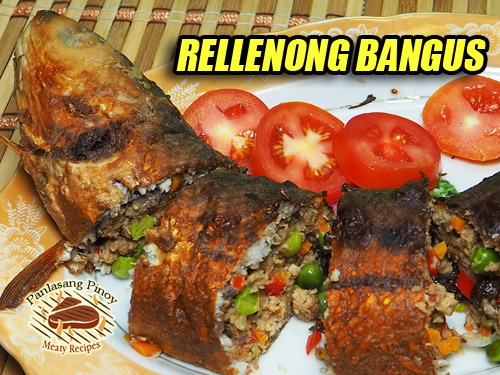

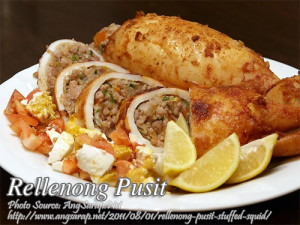
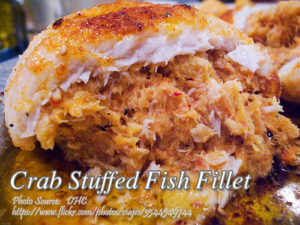
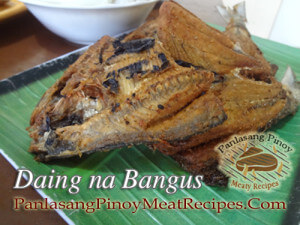
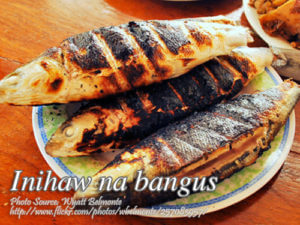
Hi! Do you fry it with the wrapped banana leaves? Appreciate your response. Thank you!
Hi Candy, no need to wrap it in banana leaves because it is already coated with flour.
Hi 🙂 I hope you’re having a great day! 🙂
I’m have an iBooks project in school about rellenong bangus. May I use your recipe in my project? I would be more than happy to credit you 🙂 Thanks
Hi Nicole, Sure you can. As long as you won’t post in on any websites.
It’s an iBook po, so I will be uploading it online. In that case, I understand your reasons. I will look for another recipe. Thank you 🙂
Hi Nicole, I said you can’t post it on websites. iBook is an app so I think that is okay. The contents of an app is not indexed in search engines like Google or Yahoo.
hi.tnx for this recipe. Im planning to sell rellenong bangus, i was thinking to sell eat ready to eat.what can i do after wrapping it in the foil?can i bake it and omit frying it?in what temp?how long should i bake it?tnx.more power
Hi Sheila, I haven’t tried baking it but I’m sure it can be done. And with regards to how long and what temperature, you can try 350°F for 30 to 40 minutes. Just experiment which temperature is best.
Does anyone have a good halibut recipe or recipes? Not one with lemon or lime and
NO Bell Peppers please
Sorry Sir this blog doesn’t have halibut recipes.